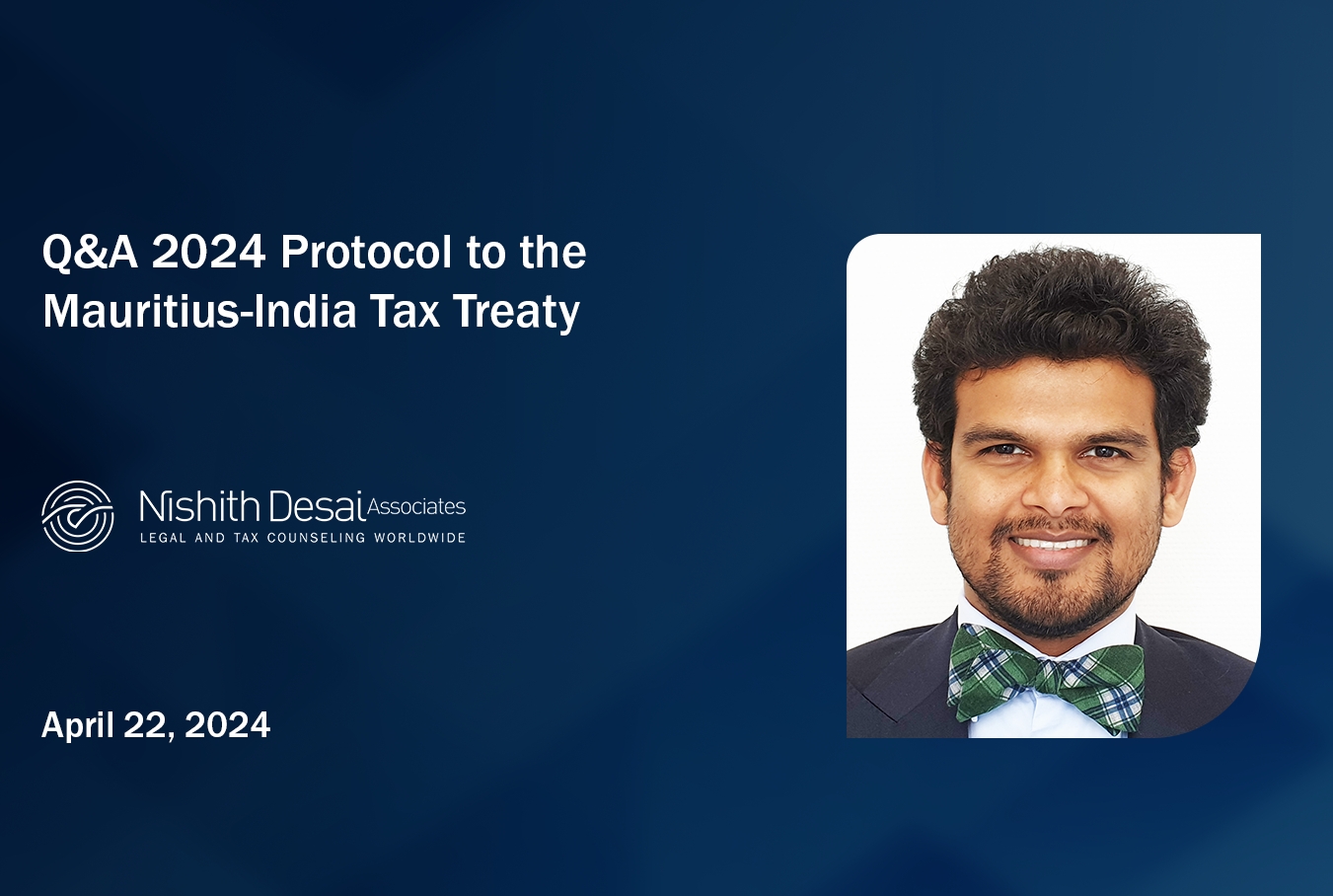IP Hotline: Delhi High Court: Mere Use of Trademarks as Keyword not Infringement Per Se
Posted by By nishithadmin at 25 September, at 18 : 47 PM Print
Warning: count(): Parameter must be an array or an object that implements Countable in /web/qlc/nishith.tv/htdocs/wp-content/themes/Video/single_blog.php on line 46
Warning: count(): Parameter must be an array or an object that implements Countable in /web/qlc/nishith.tv/htdocs/wp-content/themes/Video/single_blog.php on line 52
DELHI HIGH COURT: MERE USE OF TRADEMARKS AS KEYWORD NOT INFRINGEMENT PER SE
- Invisible use of a trademark may constitute use of the trademark for the purpose of infringement.
- Use of a trademark as keyword for triggering advertisements amounts to “use” of the mark under Section 29(6) of the Trade Marks Act, 1999.
- Mere use of a trademark as keyword to trigger ads, without any confusion, dilution or unfair advantage, does not amount to infringement per se.
- In case of a finding of infringement, the online platform/intermediary will not be entitled the safe harbour protection under Section 79 of the Information Technology Act, 2000.
In an appeal against the directions of the Single Judge,1 the Division Bench of the Delhi High Court (“Court”)in the recent case of Google LLC (“Google”) vs. DRS Logistics (P) Ltd. (“DRS”) & Ors.,2 considered the question of Google’s liability for permitting the usage of trademarks as keywords in its Ads Programme. They upheld the directions passed by the Single Judge in the impugned order (“Impugned Order”) which directed Google to investigate complaints by DRS that certain scenarios may have the effect of trademark infringement/passing off DRS’ trademark or its variations. These scenarios are the usage of DRS’ trademarks (or its variations) as keywords resulting in diversion of traffic from their website, or the overall effect of an ad itself. However, the Division Bench of the Court departed from the Single Judge’s observations on several counts. The Court ultimately held that use of a trademark as a keyword, absence any confusion, unfair advantage, dilution, or compromise of the trademark per se does not amount to infringement. The Court further held that in the event infringement is found on a factual basis, the online platform would not be entitled to the safe harbour exemption for an intermediary under Section 79 of the Information Technology Act, 2000 (“IT Act”).
BACKGROUND TO THE DISPUTE
Google Search Engine Result Page (“SERP”) displays two kinds of results for its users – ‘organic’ or ‘natural’ results and ‘inorganic’ or ‘sponsored’ results. The ‘inorganic’ or ‘sponsored’ results are identified with the prefix ‘Ad’. These ‘inorganic’ or ‘sponsored’ results are made available by a separate algorithm of Google, under its Ads Programme. The Ads Programme allows advertisers to provide certain words/phrases as keywords that act as back-end triggers for the ads. Along with providing a keyword, an advertiser also provides a per-click bid amount and maximum bid amount that may be charged by Google if the ad is triggered and clicked upon by a user. However, whether an ad will be triggered is not merely based on the bid amount for the keyword, but other factors, such as ad quality, context of the search, and other relevant factors that optimize the user experience. To assist the advertisers, Google also provides a keyword planner tool that suggests the most relevant keyword related to the product, goods or services of the advertiser.
While Google’s policy had earlier prevented the usage of trademarks as keywords, the policy was amended in 2004 after considering the monetary benefit to Google from allowing such usage. Further, use of trademarks as keyword was only allowed in India in 2009. The dispute at hand arose in 2011, when the Plaintiff, DRS claimed that the use of its trademark “Agarwal Packers and Movers” as a keyword amounted to infringement of the said trademark. DRS’s claim was premised on the assumption that the internet users searching for “Agarwal Packers and Movers” were only looking for DRS’ services, and were getting confused by the third-party ads appearing on the Google SEPR, assuming them to be DRS.
The Single Judge ruled in favour of DRS, and directed that Google shall investigate any complaint made by DRS to them alleging use of their trademark as keywords, resulting in diversion of traffic; Google shall also investigate and review the overall effect of the Ad to ascertain the same is not infringing/passing off DRS’ trademark; and if such ad is found to be infringing/passing off, then Google shall restrain the advertiser from using the same and remove/block such ad.
Accordingly, Google filed an appeal before the Division Bench of the Court.
ISSUES BEFORE THE COURT
The Division Bench considered the following key questions in deciding the above:
- Whether use of trademarks as keywords amounts to “use” of those marks under Section 29 of the Trade Marks Act, 1999 (“TM Act”).
- If so, whether such use is that of the advertiser or by Google as well.
- Whether the use of the trademark as keywords per se amounts to infringement of a trademark.
- If so, whether Google is absolved of its liability through the safe harbour exemption available to intermediaries under Section 79 of the IT Act.
DECISION OF THE COURT
“Use” of the trademark
Google argued that all the tests for determining confusion or likelihood of confusion for infringement involved perception of the trademark by the public, such as visual, phonetic or conceptual similarity. Since the keywords are imperceptible to the public, the use of trademark as keywords in the Ads Programme cannot amount to “use” under the TM Act. Further, Section 2(2)(b) and 2(2)(c) of the TM Act state that “use” must be referred to only printed use or other visual use in relation to any goods or services. The use of a trademark as keyword is not in relation to any goods or services. Therefore, it cannot be considered to be “use” under the TM Act.
However, the Court rejected this argument and held that use of a trademark as keyword amounts to “use” under the TM Act for the purpose of infringement. Section 29(6) of the TM Act specifically provides certain situations/actions that would constitute use of a registered mark for the purpose of infringement under Section 29. Section 29(6)(d) provides that use of a registered mark “in advertising” amounts to “use” under Section 29 of the TM Act. Since the Google Ads Programme uses the keywords to trigger ads amounts to use “in advertising” and falls within the ambit of Section 29(6)(d). Further, the Court held that the interpretation of “use” cannot be restricted only to Section 2(2)(b) and 2(2)(c). Section 2(2) of the TM Act begins with the phrase “unless the context otherwise requires”. Therefore, the applicability of the definition/interpretation of “use” under Section 2(2)(b) & (c) is limited by the contextual relevancy of the same. In any case, even under Section 2(2)(c)(i), use of a mark would amount to “use” under the TM Act if the same is used “in any other relation whatsoever”. Therefore, the ambit of Section 2(2)(b) and 2(2)(c) is broad, and they cannot be interpreted to limit the definition of “use” to visual or any perceptible use of a mark.
“Use” by Google
Google also argued that even if the use of trademark as keyword amounts to “use” under the TM Act, such “use” is by the advertiser, and not Google. Google claimed that it is the advertiser who provides the keywords for triggering the ads. Google merely provides a platform for the advertisers to provide the keywords and run the ads. Further, the keyword planner tool only assists the advertiser is deciding the most relevant keywords and providing the same for triggering their ads. Therefore, no “use” can be attributed to Google.
However, the Court held that Google is not merely a passive intermediary in the Ads Programme. The Ads Programme is Google’s commercial venture to raise revenue through advertisements. Google actively participates in promoting the use of trademarks as keywords for the Ads Programme. Google’s pay-per-click model suggests that the selection of ads for display on SERP is geared towards maximizing the revenue for Google. Further, Google, by virtue of operating the Search Engine for decades, is in a position to suggest keywords which will result in the highest click-through rates (i.e., visit to the website of the advertiser). While Google does not directly decide the ads which are displayed on the SERP, the same is decided by an AI operated by Google. Therefore, it cannot be said that Google is not an active participant in the “use” of trademarks as keywords.
Use of trademarks as keywords, whether per se constitutes infringement
Google argued that use of trademarks as keywords is not per se infringement of a trademark. The same has been accepted across various jurisdictions.3 The Court discusses the scope of the rights available to a trademark proprietor in an online context and the various functions sought to be served by a trademark. The Court also discusses the necessary constituent elements to establish infringement under Section 29 of the TM Act, while noting that mere invisible use of a trademark may not satisfy the requirement of confusion or likelihood of confusion to establish infringement.
No infringement without confusion or dilution
The Court accepted Google’s arguments observed that the rights of a trademark proprietor do not confer a monopoly over all forms of usages of the trademark. In typing in a trademark as a search query in a search engine, a user is not logically expecting to simply receive the address of the trademark proprietor – they may be looking for reviews, information on competitors that offer similar products or any other relevant information. Without the necessary elements of confusion or dilution, it cannot be held that the use of trademark as keyword is infringing. The Court used the analogy of a salesperson in a brick-and-mortar store offers information/deals on competing products when asked about a particular brand by the customer. Similarly, it is a prevalent practice to place billboards or rent the shelf space next to your rival’s products. While such usages do capitalize on the user’s interest in the goods associated with the trademark, the same does not constitute infringement. Consequently, undertaking the same through an online interface would similarly not be per se actionable.
Standard of Consumer to test whether confusion is likely to arise
Further, the Court also disagreed with the findings of the Single Judge who had applied a lower standard in ascertaining the nature of an internet user as one of average intelligence and imperfect recall. The Court observed that in ascertaining the knowledge/prowess of a search engine user, the Court can safely assume that the user is aware of the nature of the functionality of such an application and the relevancy of the results to the search query.
Functions of a trademark and invisible use of a trademark
A trademark performs two functions, first, as a source identifier of the goods or services (i.e., identifying the source or origin of goods or services from a particular person); and second, investment function (i.e., to preserve the value of the investment of the proprietor in a popularizing a trademark and the attendant goodwill. Accordingly, a trademark proprietor is, inter alia, entitled to restrict usages that either violate a trademark’s source identifier function or damage the investment of the proprietor.
The Court observed use of trademark as keywords is not perceptible to the public, and therefore, such use cannot perform the primary function of source identification. Section 29(1) requires the use of a marks likely to be taken as trademark (i.e., source identification function). Thus, no case of infringement can be made in relation to the source identification function of the trademark under Section 29(1) of the TM Act. Therefore, in the context of Section 29(1) of the TM Act, use as keyword does not amount to usage as a “trademark” in the context of its source identifier function.
Doctrine of initial interest confusion
Under Section 29(2) of the TM Act, the usage of a mark must result in likelihood of confusion or association with the registered trademark. It is not necessary for such confusion/association to extend until consummation of the transaction, it is sufficient if the confusion is for a brief period if there is misappropriation of goodwill. Thus, if a user is confused into believing a particular ad link is associated with the trademark owner and consequently visits such site, but upon visiting such site is cleared of such confusion, that does not amount to a defense against confusion. This is the doctrine of initial interest confusion. While there has been debate about the application of the said doctrine in the context of the internet, given the negligible exit barriers and absence of inertia of inconvenience in exiting from the confused site, the Court nevertheless held that as long as a person has piggy-backed on the goodwill of the impugned trademark and generated confusing interest to their advantage, the requirements of confusion have been met In this case, the Court clarified that mere generation of interest in the sponsored link without any likelihood of confusion will not amount to infringement of the trademark. Considering the sponsored link may be relevant to a person’s search query, the Court distinguishes such interest from the application of the doctrine of initial interest confusion.
Unfair advantage in relation to dissimilar goods or services
In relation to the investment function, the Court observed that under Section 29(4) of the TM Act in respect of dissimilar goods and services, infringement may only be claimed if the use of the trademark as keyword derives unfair advantage or is detrimental to the distinctive character or repute of the trademark, such as blurring or tarnishment. The Court used the example of persons offering specialized repair services to such trademarked goods or similar descriptive usages as a form of fair use.
In this case, while the Court noted that Google’s usage of the keywords was for shortlisting of Ads for its SERP, the keywords are also used by the advertiser in relation to their goods and services. Such usage by the advertiser may be in relation to similar or dissimilar goods and services. In relation to dissimilar goods and services, the Court held that use of a registered trademark as a keyword, absent of any confusion, dilution, or compromise of the trademark, would not amount to infringement of the trademark.
Whether Google absolved of liability under Section 79(1)
An intermediary that simply provides access to a communication system is typically exempt from liability for third party information hosted by it if it satisfies the requirements of the safe harbour exemption under Section 79 of the IT Act. The provision prescribes that an intermediary must: (i) not select the receiver of the transmission; and (ii) observe due diligence in discharging its duties. The court noted that Google’s Ads Programme permits advertisers to display targeted advertisements to users based on their search query. By encouraging advertisers to use trademarks as keywords and monetizing the same, Google acts as an active participant in the transmission of the impugning information. Additionally, Google’s intentional reversal of its keyword policy permitting trademark usage fails to discharge its duties of observing due diligence. Section 79 does not apply when an intermediary has conspired, abetted, aided or induced the commission of an unlawful act. In this case, if infringement were found, Google’s pervasive control over its Ads Programme, not only in determining the choice of advertiser, assistance in seeking out relevant internet users as ad targets, inducement in the choice of keywords but also its failure in satisfying the requirements of due diligence, disqualifies it from availing the safe harbour exemption.
Deletion of Google India from the suit
Separately, in this case, Google India Private Limited (“Google India”), the Indian subsidiary of Google argued that no directions should have been issued to Google India by the learned. single judge as it does not have any control over the Ads Programme. However, the Court observed that there is a strong link between Google and Google India, as Google India is a reseller of the Ads Programme. The Court therefore directed Google India to do whatsoever possible within its power to ensure compliance with the Court’s directions in this regard.
CONCLUSION
The judgment lays to rest the primary controversy involved in such disputes, i.e., whether mere use of a trademark as keyword for the purpose of triggering ads amounts to infringement per se. Even though the Court held that the use of trademark as keyword is “use” under the TM Act, such “use” would not be actionable or considered infringing unless other requirements of the various sub-sections of Section 29 are met, such as likelihood of confusion, dilution, unfair advantage, etc. Therefore, the Court has drawn the necessary distinction between “use” and infringing “use” under the TM Act. In fact, in another recent judgment dated 06 September 2023 in Policybazaar Insurance Web Aggregator & Anr. vs. Coverfox Insurance Broking Pvt. Ltd., 2023:DHC:6407 (“Policybazaar Judgment”), the single judge of the Delhi High Court, found in favour of the advertiser and Google as the ads impugned by the plaintiffs in this suit did not lead to any confusion, dilution or resulted in unfair advantage. The single judge, in Policybazaar Judgment reiterated that mere diversion of customers from the plaintiffs’ website to that of the advertisers is not actionable.
However, the judgment has also held that an intermediary actively participating in the advertising process, with a purpose to maximize revenue cannot be absolved of their liability and avail the safe harbour provided to the intermediaries under Section 79 of the IT Act. The Judgment does not provide any clarity as to which of the three legs does Google fall foul of under Section 79 of the IT Act. The Court has merely proceeds on the fact that Google is not a “passive”, but rather an “active” participant in the Ads Programme. This finding by the Court is in contradiction with the earlier decisions of the Division Bench of the Delhi High Court in Amazon Seller Services Pvt. Ltd. vs. Amway India Enterprises Pvt. Ltd.4 (“Amazon Judgment”) and Myspace Inc. vs. Super Cassettes Industries Ltd.5 (“Myspace Judgment”).
In the Amazon Judgment, the Court had held that Section 2(w) and Section 79 of the IT Act do not make any distinction between “active” or “passive” intermediaries. As long as an intermediary meets the requirements under Section 79, they are eligible for the safe harbour protection. Therefore, the finding that online platforms lose the safe harbour protection due to their active participation or being “active” intermediaries is contrary to the Amazon Judgment. Further, in Myspace Judgment, it was held that any decision on the intermediary status of an online platform and the applicability of safe harbour protection can only be made after leading evidence in a trial, as these are questions of facts about the role played by the online platform in the process. Any finding that an online platform loses its safe harbour protection due to being an “active” intermediary would require leading evidence and cannot be made at the stage of interim orders. Thus, the present judgment is in contradiction of the previous judgments of the co-ordinate bench of the Delhi High Court. Now it is to be seen how the subsequent benches reconcile this dichotomy in the judgements of the Delhi High Court.
You can direct your queries or comments to the authors.
1M/s DRS Logistics (P) Ltd. & Anr. vs. Google India Pvt. Ltd. & Ors., 2021 (88) PTC 217 Del.
22023 SCC OnLine Del 4809.
3Google LLC vs. DRS Logistics (P) Ltd. & Ors., 2023 SCC Online Del 4809, Para. 45: United Kingdom, United States of America, European Union, Australia, New Zealand, Russia, South Africa, Canada, Spain, Italy, Japan and China.
4(2020) 267 DLT 228.
5(2017) 236 DLT 478.
Chambers and Partners Asia Pacific 2023: Top Tier for Tax, TMT, Employment, Life Sciences, Dispute Resolution, FinTech Legal
Legal 500 Asia Pacific 2023: Top Tier for Tax, TMT, Labour & Employment, Life Sciences & Healthcare, Dispute Resolution
Benchmark Litigation Asia Pacific 2023: Top Tier for Tax, Labour & Employment, International Arbitration
IFLR1000 2022: Top Tier for M&A and Private Equity
AsiaLaw Asia-Pacific 2022: Top Tier for Tax, TMT, Investment Funds, Private Equity, Labour and Employment, Dispute Resolution
FT Innovative Lawyers Asia Pacific 2019 Awards: NDA ranked 2nd in the Most Innovative Law Firm category (Asia-Pacific Headquartered)
RSG-Financial Times: India’s Most Innovative Law Firm 2019, 2017, 2016, 2015, 2014
DISCLAIMER
The contents of this hotline should not be construed as legal opinion. View detailed disclaimer.






